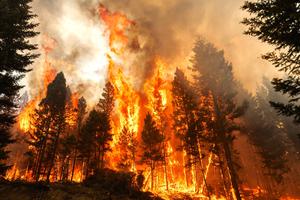Two-thirds of bird species in North America are at risk of extinction if global temperatures continue to rise, according to a new report from scientists at the Audubon Society. A total of 389 species, out of 604 studied, could experience declines in their populations as a result of warmer temperatures, higher seas, loss of habitat, and extreme weather, all driven by climate change.
Among those birds most at-risk are the greater sage grouse, Baltimore oriole, common loon, and the wood thrush. The new study comes less than a month after research found the United States and Canada have lost 3 billion birds since 1970, equal to losing one out of every four birds.
“Birds are important indicator species, because if an ecosystem is broken for birds, it is or soon will be for people too,” Brooke Bateman, the senior climate scientist for the National Audubon Society, said in a statement.
Scientists analyzed 140 million bird records from more than 70 sources in Canada, the U.S., and Mexico, including field sightings from citizen science projects, to produce the report. They found that 64 percent of North American bird species are at risk of extinction if global temperatures increase 3 degrees Celsius. That dropped to 54 percent with 2 degrees C of warming, and 40 percent, or 241 species, if nations could hold global warming to 1.5 degrees C — the Paris Agreement target.
“Keeping global temperatures down will help up to 76 percent of [species],” said David Yarnold, CEO and president of Audubon. “There’s hope in this report, but first, it’ll break your heart if you care about birds and what they tell us about the ecosystems we share with them. It’s a bird emergency.”





